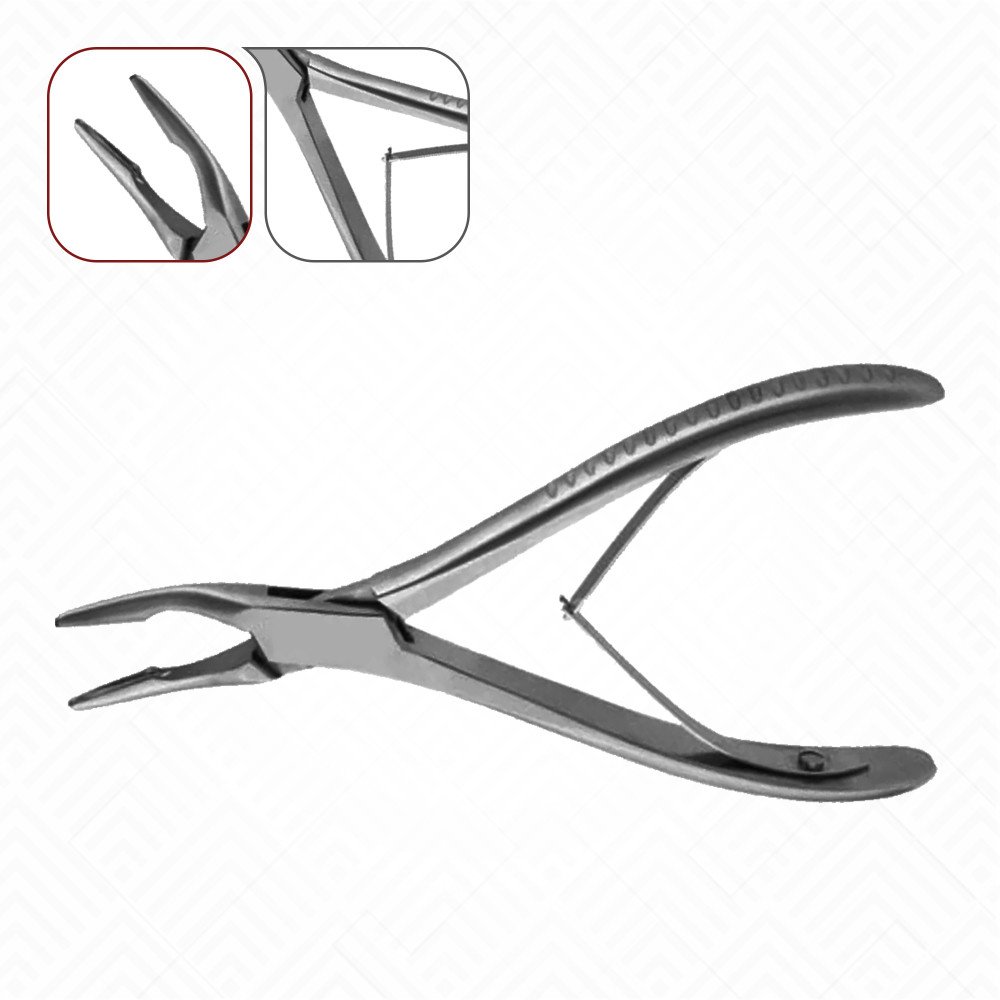The Essential Guide to the Bone Rongeur
Wiki Article

In the precise world of surgery, the quality of an instrument can directly impact patient outcomes. For procedures involving bone, few tools are as fundamental as the bone rongeur. This specialized instrument is designed for gouging out bone, a task that requires a combination of strength, sharpness, and ergonomic design. Understanding its function, variations, and proper maintenance is essential for any surgical professional dedicated to excellence.
Defining the Bone Rongeur's Role
A bone rongeur is a heavy-duty surgical instrument with sharp, scoop-shaped jaws. Its primary purpose is to remove small pieces of bone, often to widen an existing opening or to prepare a site for an implant. Surgeons use it in various specialties, including orthopedics, neurosurgery, and oral and maxillofacial surgery. The instrument's design allows for controlled and precise removal of bone tissue, which is critical for protecting surrounding nerves and soft tissues.
Exploring Different Types of Rongeurs
Not all bone rongeurs are the same. They come in various shapes and sizes, each tailored for specific anatomical locations and surgical needs. For instance, a Leksell rongeur features a double-action joint, providing greater cutting force with less manual effort. A Stille- Luer rongeur, on the other hand, is often used for more delicate work. The choice of instrument depends on the bone's density, the surgical site's accessibility, and the surgeon's preference.
The Importance of High-Quality Materials
The effectiveness of a bone rongeur is heavily dependent on the quality of its construction. Instruments made from high-grade surgical stainless steel offer the necessary durability and resistance to corrosion. The sharpness of the cutting edges is paramount; a dull instrument can crush bone rather than cut it, leading to tissue trauma and a less predictable surgical field. At New Med Instruments, we prioritize crafting tools that maintain their integrity and sharpness through countless procedures.
Proper Handling and Technique
Using a bone rongeur correctly is a skill honed through practice. The surgeon must apply firm, steady pressure to engage the bone without causing fractures or collateral damage. The "bite" size should be small and controlled, removing bone in layers rather than large, singular chunks. This methodical approach ensures a smooth, well-prepared surface and minimizes the risk of complications, aligning with the precision that healthcare professionals strive for.
Sterilization and Maintenance Protocols
Like all surgical instruments, proper care and sterilization of a bone rongeur are non-negotiable for patient safety. After each use, the instrument must be thoroughly cleaned to remove all biological debris, paying close attention to the joints and jaw surfaces. Following this, it must undergo a validated sterilization process, such as autoclaving. Regular inspection for sharpness, alignment, and mechanical function ensures the instrument remains in optimal condition for every surgery.
New Med Instruments: A Commitment to Quality
New Med Instruments is dedicated to supporting the medical community by providing superior surgical instruments. We understand that surgeons, students, and healthcare professionals rely on their tools to deliver perfect and precise results. Our commitment extends beyond the product itself; we offer exceptional service to professionals worldwide who share our value for quality patient care. Our instruments are engineered to meet the demanding standards of modern surgery, providing the reliability you need when it matters most.
Conclusion: The Instrument of Precision
The bone rongeur is more than just a tool; it is an extension of the surgeon's hands. Its effective use in complex procedures highlights the synergy between skilled professionals and high-quality instrumentation. By choosing well-crafted instruments and adhering to best practices for their use and maintenance, surgical teams can continue to achieve the excellent outcomes their patients deserve.
Report this wiki page